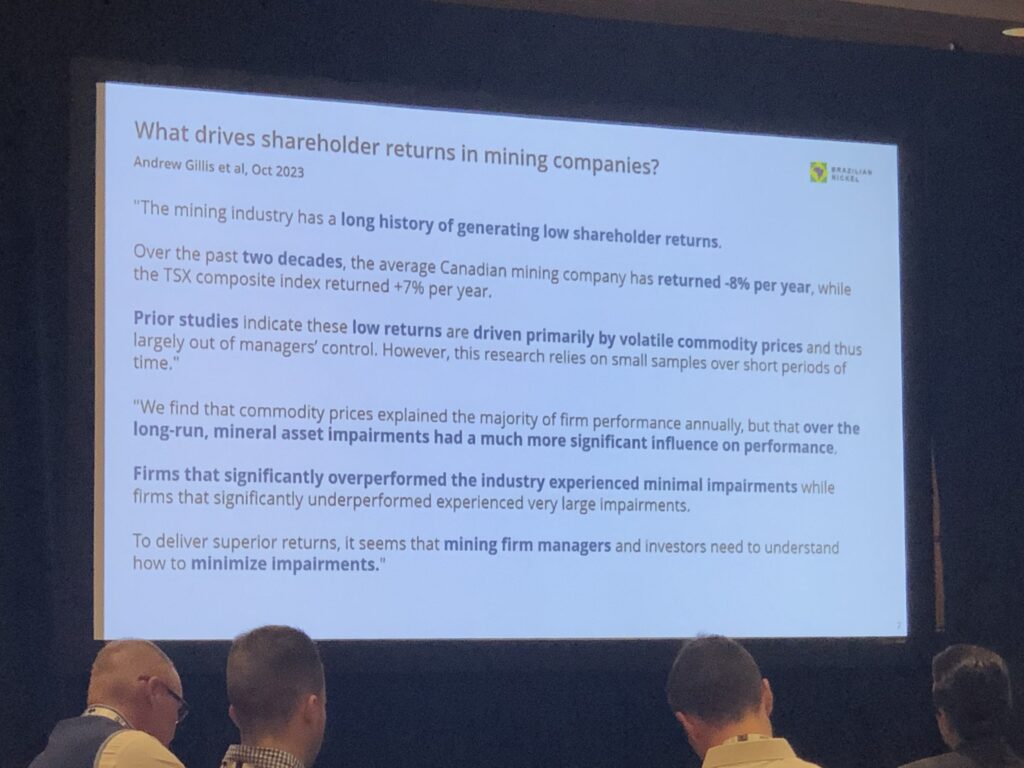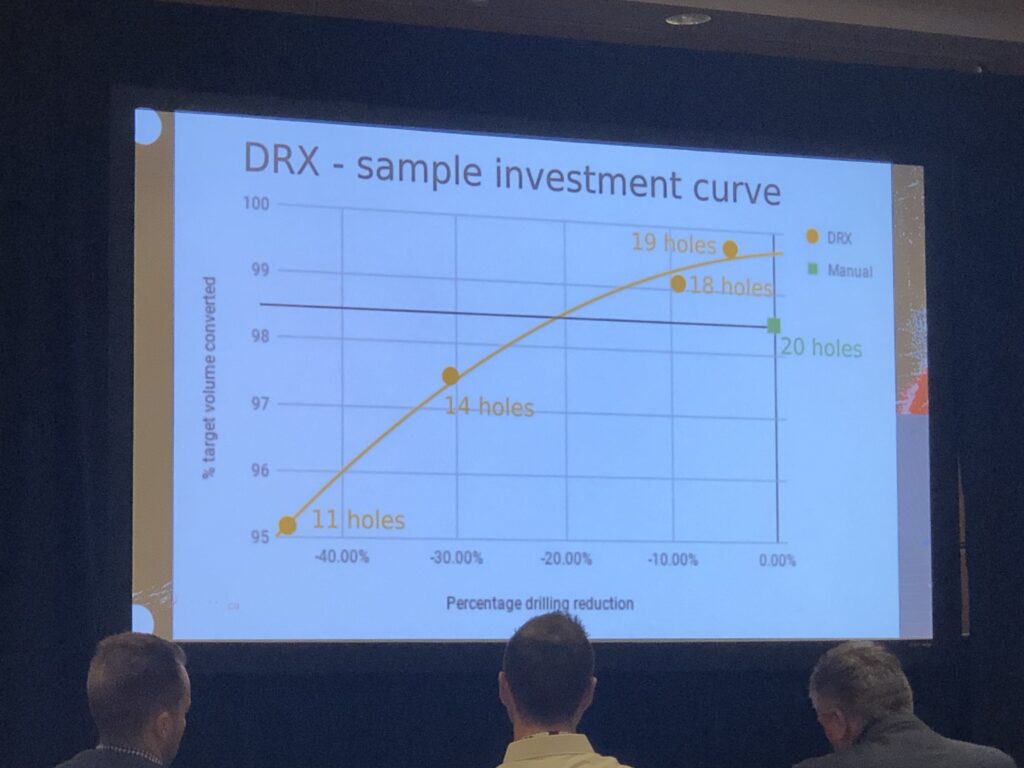Call Us Today: +1 866 205 2414
CIM Capital Projects Symposium 2024 Insights By Varun Persaud
At the recent CIM Capital Projects Symposium, industry leaders emphasized a significant trend reshaping the mining sector: the growing reliance on data-driven insights for strategic planning. As projects grow in scale and complexity, the ability to harness comprehensive data analytics is no longer a nice-to-have but an essential component of effective project management. From enhancing performance accountability to enabling informed decision-making, data analytics are transforming how mining companies approach project planning and execution.
Shifting Toward a Data-Driven CultureMining projects have traditionally relied on experience-based decisions and historical data, but as the industry faces new challenges—from fluctuating commodity prices to environmental regulations—these approaches are being complemented, and in some cases replaced, by data-driven strategies. Conference speakers highlighted this shift as a game-changer, allowing companies to ground their decisions in real-time, actionable data, leading to more accurate forecasts and optimized resource allocation.
The industry’s transition toward a data-driven culture involves embracing the power of predictive and prescriptive analytics. By using data to anticipate future scenarios and provide actionable recommendations, mining companies can stay ahead of potential obstacles, making the path to project success more transparent and controlled.

"What Drives Shareholder Returns in Mining Companies"—A mining executive's lens into delivering a project that brings strong long-term shareholder returns. Considering the factors that can lead to the success or failure of projects in adding value to an organization, what must we do at the pre-FID stage to improve the industry's record of success? Keynote: Value Creation Through Projects by Mark Travers, CEO of Brazilian Nickel Ltd.
Value Creation Through Projects by Mark Travers, CEO of Brazilian Nickel Ltd.
One key benefit of data analytics is its ability to drive performance accountability. Mining projects involve multiple teams, intricate timelines, and significant capital investment, all requiring precise tracking to meet goals. Data-driven insights give project owners and managers the tools to measure performance accurately across each project phase.
During the conference, experts discussed how data analytics enables companies to set performance benchmarks and use metrics to track progress. By consistently monitoring performance against these benchmarks, companies can identify improvement areas and take corrective action before issues compound. This accountability enhances operational efficiency and strengthens trust with stakeholders, who gain confidence in the project’s ability to deliver results.


Mining projects are dynamic, and the ability to make timely, informed decisions can mean the difference between success and costly setbacks. Data-driven insights give project leaders access to real-time information, enabling them to adjust quickly. Whether adjusting schedules based on supply chain data or reallocating resources based on field conditions, real-time insights empower teams to respond proactively to changes.
Conference presenters highlighted case studies where data analytics helped teams avoid delays and reduce costs by allowing them to spot issues early and respond quickly. This proactive approach enables teams to optimize project outcomes, maintain schedules, and minimize budget overruns.
Risk Management & Predictive AnalyticsPredictive analytics is one of the most promising applications of data-driven insights in mining, particularly for risk management. By analyzing historical data and current project conditions, predictive models can help identify potential risks and offer strategies for mitigation. At the conference, experts shared examples of projects that used predictive analytics to foresee challenges such as equipment failures, supply chain delays, and environmental hazards, allowing teams to develop contingency plans before these issues affected timelines or budgets.
In an industry with significant risks, predictive analytics provide an extra layer of security, enabling companies to manage potential disruptions proactively. This shift from reactive to proactive risk management allows mining projects to operate with excellent stability and predictability, reducing the chances of unexpected interruptions.
Data-Driven Resource OptimizationResource allocation is another area where data-driven insights are profoundly impacting the industry. Mining projects are resource-intensive, and inefficient use can lead to costly delays and waste. Data analytics help companies analyze usage patterns, forecast needs, and optimize resource allocation to ensure each project phase receives the required support.
Speakers at the conference noted that companies using data to guide their resource strategies can achieve a higher return on investment by avoiding the common pitfalls of resource shortages or excesses. This efficient allocation also contributes to environmental sustainability, as better-managed resources lead to less waste and a smaller ecological footprint.
Building Stakeholder Confidence Through TransparencyData-driven insights support internal project management and play a crucial role in building transparency with external stakeholders. Mining companies can enhance transparency with investors, regulatory bodies, and local communities by providing clear, data-backed reports on project progress and performance. Recent industry trends have also shown that stakeholders are more likely to support projects when they have confidence in the company’s ability to manage resources effectively and make informed decisions.
Data transparency builds trust in a competitive and highly scrutinized industry like mining and reinforces a company’s commitment to responsible, sustainable operations.
The Future of Data-Driven MiningThe CIM Capital Projects Symposium made it clear that data-driven insights are more than a trend—they represent the future of mining. As the industry evolves, adopting comprehensive data analytics will be vital to achieving more strategic planning, enhanced performance accountability, and agile decision-making.
The journey is just beginning for mining companies ready to embrace data-driven practices. From risk management to resource allocation, data analytics offers the tools to tackle today’s challenges and seize tomorrow’s opportunities. If you’re considering a data-driven approach for your next project, let’s connect and discuss how this shift can position you for greater success in an increasingly data-centric mining industry.
TMG specializes in executive and operational consulting for the mining and oil and gas sectors. It offers tailored oversight and strategic guidance across all project stages to ensure optimal outcomes from conception to execution.
TMG committed to diversity and inclusion, based on the undisputed fact, that a fully inclusive environment, fosters a unique perspectives that can solve challenging problems and creates value, within the company, for our clients, the communities of which we work, and the world at large.
TMG’s corporate vision and values, are to honour the rights and cultures of all people and respectfully approach all business, with fair dealings and establishing and maintain a mutually respectful relationship.
TMG acknowledges that our offices are located on traditional lands of divers First Nations and Indigenous peoples. Guided by the Constitution of both Canada & the USA, the United Nations Declaration on the Rights of Indigenous Peoples (UNDRIP) and the recommendations of all Truth and Reconciliation Commission as a framework, we are committed to taking ongoing positive and concrete steps towards reconciliation.